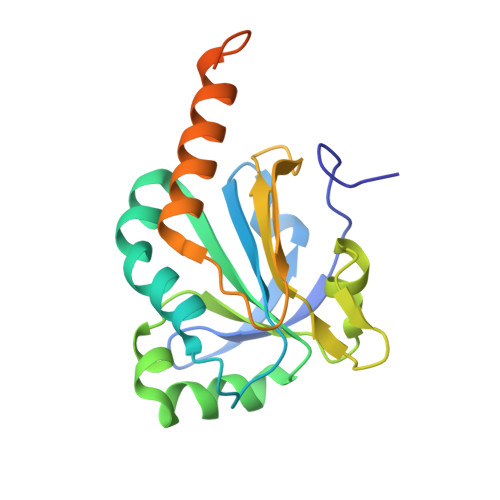Transition steps in peroxide reduction and a molecular switch for peroxide robustness of prokaryotic peroxiredoxins.
Kamariah, N., Sek, M.F., Eisenhaber, B., Eisenhaber, F., Gruber, G.(2016) Sci Rep 6: 37610-37610
- PubMed: 27892488
- DOI: https://doi.org/10.1038/srep37610
- Primary Citation of Related Structures:
5B8A, 5B8B - PubMed Abstract:
In addition to their antioxidant function, the eukaryotic peroxiredoxins (Prxs) facilitate peroxide-mediated signaling by undergoing controlled inactivation by peroxide-driven over-oxidation. In general, the bacterial enzyme lacks this controlled inactivation mechanism, making it more resistant to high H 2 O 2 concentrations. During peroxide reduction, the active site alternates between reduced, fully folded (FF), and oxidized, locally unfolded (LU) conformations. Here we present novel insights into the divergence of bacterial and human Prxs in robustness and sensitivity to inactivation, respectively. Structural details provide new insights into sub-steps during the catalysis of peroxide reduction, enabling the transition from an FF to a LU conformation. Complementary to mutational and enzymatic results, these data unravel the essential role of the C-terminal tail of bacterial Prxs to act as a molecular switch, mediating the transition from an FF to a LU state. In addition, we propose that the C-terminal tail has influence on the propensity of the disulphide bond formation, indicating that as a consequence on the robustness and sensitivity to over-oxidation. Finally, a physical linkage between the catalytic site, the C-terminal tail and the oligomer interface is described.
- Bioinformatics Institute, Agency for Science, Technology and Research (A*STAR), 30 Biopolis Street, #07-01 Matrix, Singapore 138671, Republic of Singapore.
Organizational Affiliation:

















